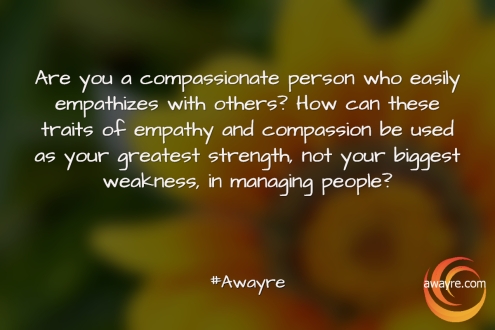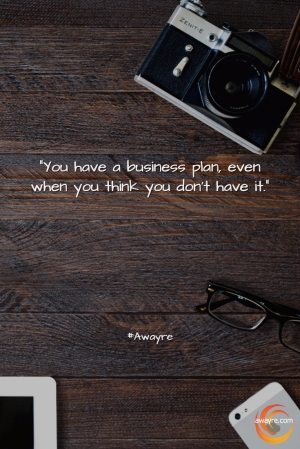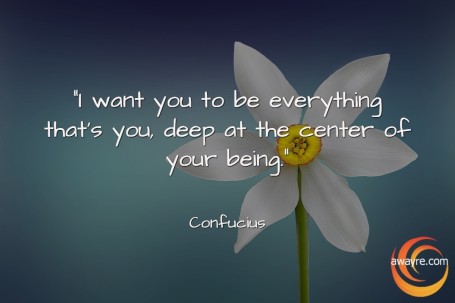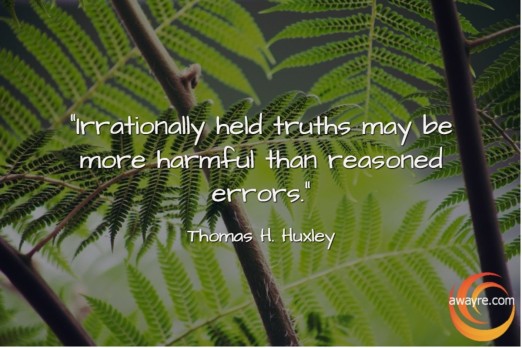Roundup for Weeks Ending Nov 6, 13, 20
The word “knowledge” comes from the root word Gnosis which implies a penetrating insight into the Truth, in the true nature of things. This penetrating insight almost always  means cutting through the junk we have collected in our minds and conditioning we have been subjected to over the years. Intellectual knowledge is not bad, it’s just a part of the ways towards reaching the true knowledge. The easiest and most practical way to use this piece of – forgive me – knowledge is to seek always to make it practical and useable in our daily lives. With that, in our roundup this issue, I implore you to look for one true insight and see how you can apply it to improving an important aspect of your business.
means cutting through the junk we have collected in our minds and conditioning we have been subjected to over the years. Intellectual knowledge is not bad, it’s just a part of the ways towards reaching the true knowledge. The easiest and most practical way to use this piece of – forgive me – knowledge is to seek always to make it practical and useable in our daily lives. With that, in our roundup this issue, I implore you to look for one true insight and see how you can apply it to improving an important aspect of your business.
Management and Leadership
Also helpful if you manage a work team in a large corporation. (8 Tips to Improve Internal Communication Skills at Your Small Business)
Are you a compassionate person who easily empathizes with others? How can these traits of empathy and compassion be used as your greatest strengths and not your biggest weaknesses as you work with others in a corporate setting? (Why psychopaths are so good at getting ahead)
If you could change them, what would you keep in and leave out of performance reviews? (Let’s Not Kill Performance Evaluations Yet)
Be honest with yourself: Would your team perform better or worse if they didn’t have a defined workplace? (Could this be the end of the office as we know it?)
If you could sell your business, would you do it? And for how much? (When Is the Right Time to Sell Your Business?)
True or False: If you have less gender gap in your company, your employees become more engaged. (The Rewards of an Engaged Female Workforce)
How often do your employees work at or near their peak potential? (5 habits of high performance teams)
Do you enjoy being inundated with management wisdom? No, it’s not a trick question! Be honest: Would you rather read about management wisdom or practice it live with your team? (A year’s worth of management wisdom in one place)
ReOrg: Do you wing it or think it through? (Here’s how to make reorgs less miserable)

What’s the turnover rate for your hourly employees? Is it the same as your non-hourly employees? (7 Ways To Significantly Reduce Hourly Employee Turnover)
What are some characteristics of a “perfect team,” if such a thing existed, for you? (How to Build the Perfect Team)
How well do your employees engage with your business goals? (How to get employees invested in your business goals)
Recruiting
Where would you invest to attract candidates? (Job Boards VS LinkedIn)
Agree or disagree?: Acquiring companies is an effective way to get good employees on-board. (Lessons you can learn from recent M&A deals)
Are you asking your recruiter to find you a Harvard-educated beauty-pageant-winning neuroscientist for $30K? This article was not meant for a hiring manager but you might find some insights on how to dial your expectations properly in a job candidate. (What to Do When a Hiring Manager Expects a Miracle)
Branding, Marketing, and Sales
How important is a logo to your business, or even to your team? (10 Principles of the Business Logo Design Masters)
How to hit Maslow’s hierarchy of needs with your products and services. (The Elements of Value)
Looking for ways to boost revenues? How about maximizing the moment when someone has already trusted you with their money? (Would you like fries with that? Cross-selling to your clients)
How full – or empty – is your sales pipeline? (The Complete Guide to Cold Email Prospecting)
Would rather read promotional materials or read a story? (Storytelling for a Better User Experience)
Do you see value in getting new types of customers that you normally don’t get? (Why Aren’t You Co-Marketing?)
What’s your content strategy for moving prospects down the sales cycles? (Create content to move leads down the sales cycle)
What psychological triggers do you use to compel people to engage with, commit to and buy from you when you market to them? (A practical guide to using psychology in your marketing)
Personal Productivity
The “To Do” list has grown up. (Top 5 Productivity Tools to Help You Get Things Done Faster)
Does being more relaxed increase our productivity? (I just spent a day in a mindfulness program developed at Google and left with 5 key lessons)
A bigger question: Would being more “productive” actually bring you more results? (Productivity hacks: gold dust or garbage)
What are some of your favorite communication and productivity tools? Here’s 4 for you to consider… (Top communication & productivity tools)
Operations and Customer Service
Would your customer engagement increase if you customized your loyalty programs? (Analytics Is Transforming Customer Loyalty Programs)
Which 1 or 2 of these “languages” do you use to make your customers feel loved? Which 1 or 2 would you add? (Do You Know Your Customer’s Love Language)
Trending…
How the “elites” respond to a president they don’t like: with pen, paper, and ideas, not guns.(This is the most unexpected winner from Donald Trump’s election victory so far)
What happens when migration and trade patterns change? (Trump, Globalization, and Trade’s Uncertain Future)
Can you keep an open mind without losing your cool? (Is office the right place to discuss politics?)
Is Apple next Microsoft or is it Disney? I think it depends on whether Tim Cook can create a culture of innovation alongside the culture of operational effectiveness. (Tim Cook is on track to be the next Steve Ballmer)
‘Till next time,
Bhavesh.
Is your business built around your people’s strengths? You can find out here by taking Business Health Check AQ. It’s free and comes with a strategy guide to help you leverage your people’s strengths and compensate for their weaknesses.
Copyright 2016 Bhavesh Naik and Awayre, LLC. All rights reserved. Articles referred from this site are the properties of their original authors.

 stage in your sales pipeline? (
stage in your sales pipeline? ( true in strategy but also in sales and marketing. (
true in strategy but also in sales and marketing. ( make it practical, is useless. To really find meaningful nuggets of information, we must know one thing more than anything else: ourselves. As we are exposed to more and more information, we need to find deeper and deeper core of who we are: what roles we play, what’s important to us, and what our priorities are. Then, even one piece of information, if understood well and applied with sincere understanding, will have the ability to bring a meaningful change in an important aspect of our lives.
make it practical, is useless. To really find meaningful nuggets of information, we must know one thing more than anything else: ourselves. As we are exposed to more and more information, we need to find deeper and deeper core of who we are: what roles we play, what’s important to us, and what our priorities are. Then, even one piece of information, if understood well and applied with sincere understanding, will have the ability to bring a meaningful change in an important aspect of our lives.
 To be truly effective in business, learning must go from an idea to an experiential realization. If that does not happen, we can’t make the new ideas practical and applicable to our business and out work. In other words, they don’t bring us meaningful results.
To be truly effective in business, learning must go from an idea to an experiential realization. If that does not happen, we can’t make the new ideas practical and applicable to our business and out work. In other words, they don’t bring us meaningful results. up in your life. You are the main character in the story that’s you and your life. And that story, your life experiences tied in a thread, gives you a perspective. That’s why, the meaning that you and your team give to the data and the information that’s there for you to process is extremely important. In fact, that – the meaning you have for the information you review – is the only thing that matters to you.
up in your life. You are the main character in the story that’s you and your life. And that story, your life experiences tied in a thread, gives you a perspective. That’s why, the meaning that you and your team give to the data and the information that’s there for you to process is extremely important. In fact, that – the meaning you have for the information you review – is the only thing that matters to you. o the original author for not being able to give him the due credit.
o the original author for not being able to give him the due credit. But underneath it all is a source that’s as mysterious as it is intimate. You might say that that mysterious life-force is us.
But underneath it all is a source that’s as mysterious as it is intimate. You might say that that mysterious life-force is us. Two examples of such myths are in leadership & management and in the idea of “mindfulness.”
Two examples of such myths are in leadership & management and in the idea of “mindfulness.” and more of our attention. I am not into predicting the future, but I can safely say, and I think you will agree, that the amount of content we get exposed to on a daily basis will only increase, not decrease over time. So something that we all need to master is how to keep our sense of equilibrium in the midst of a deluge of information that hits us every day. To me, that tells me that it’s increasing more important that we spend more and more time with ourselves getting our priorities straight, doing what we love to do most, and ruthlessly rejecting all else. This requires that we increasing bring more and more awareness into our lives: awareness of what makes us tick, what our priorities are, and what’s most important to us.
and more of our attention. I am not into predicting the future, but I can safely say, and I think you will agree, that the amount of content we get exposed to on a daily basis will only increase, not decrease over time. So something that we all need to master is how to keep our sense of equilibrium in the midst of a deluge of information that hits us every day. To me, that tells me that it’s increasing more important that we spend more and more time with ourselves getting our priorities straight, doing what we love to do most, and ruthlessly rejecting all else. This requires that we increasing bring more and more awareness into our lives: awareness of what makes us tick, what our priorities are, and what’s most important to us. uncomfortable thoughts. Let me tell you, I didn’t make a lot of friends and I may have lost a client or two because of my insistence on
uncomfortable thoughts. Let me tell you, I didn’t make a lot of friends and I may have lost a client or two because of my insistence on